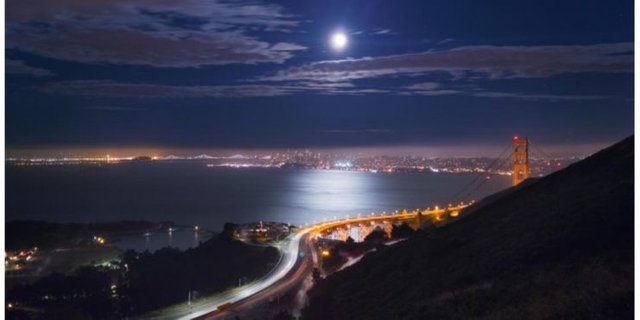Google Explains How To Take A Quality Photo 'Reflex' With A Smartphone

If you've always thought that night photos were necessarily missed with a smartphone, be prepared to change your mind. Florian Kainz, a computer engineer working for Google, and an outstanding photographer, recently released a set of stunning photographs taken in long exposure, with a Nexus 6P. These photos can compete with the shots made with its high-end DSLR.
By writing about it on the Google Research Blog, Kainz explains how, with a bit of coding, he was able to push the Nexus 6P to the limit of its capabilities to produce sharp, vibrant photos at night without any sign of noise Which usually marks the pictures taken with our smartphones.
The idea itself is nothing new: in fact, it comes from a theory close to the excellent HDR mode of Google, which is the key to the superb photographic quality that one can get from smartphones Google Pixel and Pixel XL, as well as multiple Nexus models released earlier.
The two techniques are based on the fact that one can reduce the noise of the image by making several takes of the same scene then combining the images and mathematically balancing the least noise on the image. The idea is that each pixel that changes from one image to another may be a pixel of noise and should therefore be eliminated, while those that remain stable in each of the shots are the pixels that form the image that It is desired to obtain.
The big difference between the Kainz method and the HDR mode is that it takes several long exposures (up to ten photos) in a minimal amount of time and is suitable for camera shots. Kainz has created a bespoke Android app that takes up to 64 photos on long exposure, four seconds each, which requires a tripod or at least one way to keep the phone steady.
After capturing his batch of shots, Kainz takes them again, but this time with the lens hidden, which gives a series of images containing nothing but noise. According to Kainz, the series of dark images has some kind of fuzzy gridlines, caused by the perceived variations on the surface of the camera's sensor.
The Kainz application saves individual shots as a raw DNG file, which it then processes on its PC. The "photo" images are balanced to give a sharper image with less noise, then the dark images are also balanced with each other and subtracted from the result to eliminate the grid shapes.
The difference between a standard shot, camera in hand, and the calculated image of Kainz is enormous.
Kainz's experiments are fully searchable on the Google Research Blog. As for his photographs made with the technique he developed, an album is visible by clicking here.
Kainz had to develop its own application to achieve these results, but any smartphone shooting application with settings to control overexposure manually will allow you to conduct similar experiments.
Although pictures like the ones Kainz did require a little more work than simply aiming and pressing the button, they show just how smartphone photos can be successful when taken with the right process. It is precisely this type of technology that detaches Google from the lot in the field of smartphone photo quality, even if its devices do not necessarily present the best features or best optical.
Source :
Research Blog of Google

Source: https://www.forbes.com/sites/paulmonckton/2017/04/30/google-long-exposure-smartphone-shots-are-like-dslr/#68ef842c32a9
Not indicating that the content you post including translations, spun, or re-written articles are not your original work could be seen as plagiarism.
Some tips to share content and add value:
Repeated plagiarized posts are considered spam. Spam is discouraged by the community and may result in action from the cheetah bot.
Thank You! ⚜
If you are the author, please reply and let us know!
Windows Phone Camera Offers You Manual control on every thing
thanks for your reply 😀
very good post
u are welcome
Awesome photograph. As someone who takes lots of photos, these tips would be of great benefit. Thank you for sharing.
u are welcome 😀
Really informative in fact it may help those frustrated photographers like me who only have smartphones for taking stunning scenery. Thanks for that @hicmaster happy steeeming 🤗🤗
thanks for your reply and the upvote @dwaeji-aizelle 😀
And yea do visit my profile if you have time @hicmaster
ok i will do it 😀
My friend, a kind reminder here.
#cn tag is stand for chinese.
However, no chinese was detected in this article.
Please use wisely for your tag,thank you.
@incrediblesnow thanks for your reply updated it's simply a Typing Error but i love China and Chinese People hope to go there one day 😀
Nice content, very educated i've resteem-it..
Thanks for sharing such a good info..
thanks @ardian27 😀
U welcome :)
Nice post. Good info.
u are welcome
This post received a 2.0% upvote from @randowhale thanks to @hicbeta! For more information, click here!
Nice post